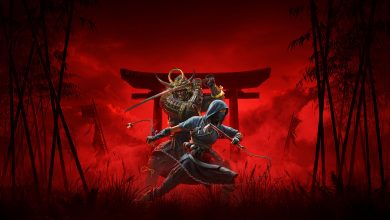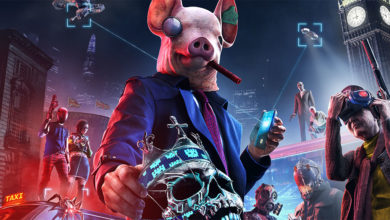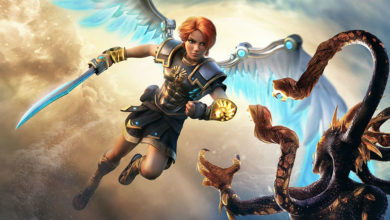![]() I remember Assassin’s Creed. I remember how to me, it represented the first true “Next-Gen” game with its revolutionary control scheme and sprawling cities, full of life. I remember the urge to get a new console just to play the game, to experience a new era of gaming. Most of all, I remember a final product with unfulfilled promises which seemed rushed to the market to meet release deadlines. Despite all its shortcomings, the promise that Assassin’s Creed held was far too great to go unnoticed. It brought new gameplay ideas to the table and told an intriguing story. To sum it up, Assassin’s Creed felt like an elaborate “tech-demo”, the potential of which has been finally realised after two years with Assassin’s Creed 2.
I remember Assassin’s Creed. I remember how to me, it represented the first true “Next-Gen” game with its revolutionary control scheme and sprawling cities, full of life. I remember the urge to get a new console just to play the game, to experience a new era of gaming. Most of all, I remember a final product with unfulfilled promises which seemed rushed to the market to meet release deadlines. Despite all its shortcomings, the promise that Assassin’s Creed held was far too great to go unnoticed. It brought new gameplay ideas to the table and told an intriguing story. To sum it up, Assassin’s Creed felt like an elaborate “tech-demo”, the potential of which has been finally realised after two years with Assassin’s Creed 2.
[singlepic id=1686 w=450 float=center]
In fact, the biggest strength of Assassin’s Creed 2 comes from the capability of the development team behind it to take feedback and channel it constructively to weed out almost every issue that was counterproductive to every great idea that the original had. So lets dwell deeper into what makes Assassin’s Creed 2 a near-perfect realisation of the series. For starters, Altair is gone. Well, not exactly, but he’s gone nonetheless. Enter Ezio Auditore da Firenze, son of a nobleman by day and assassin by night. Ezio’s carefree life of running across rooftops, getting into fights with rivals and courting pretty ladies comes to a screeching halt when his family gets caught up in a diabolical plot to overthrow the ruling family of Florence. Most of Ezio’s story is driven by revenge, as he learns the ways of an assassin to hunt down those who hurt his family. However, the stakes are much higher than revenge, as the age-old battle between the templars and assassins takes centrestage later in the game.
All in all, the story is extremely engaging and is brought to life by a strong narration and excellent characters, led by Ezio himself. It’s a lot easier to get on board with the witty and snappy Ezio than the sour and serious Altair, and firmly establishes that being an assassin is not just about getting bogged down by the responsibility of saving the world. As a result, Ezio comes across as a badass assassin with a sharp tongue and a bloodthirsty “hidden blade”. On the downside, the concluding moments of the game may fail to make a huge impact on the player because the larger scheme at play behind the betrayal of Ezio’s family comes into the limelight quite late into the game. All of a sudden, you are hunting for, well, ‘something’ without fully understanding its implications.
[singlepic id=1682 w=450 float=center]
Ubisoft has to be commended for the design choices they took. Let’s look at the gameplay first; the dictate was clear: Do not try to fix what’s not broken. The control scheme still follows the “puppeteer” design, with face buttons mapped onto the actions of different body parts. The control scheme was hailed two years back as an innovative feature of the series, and movement/platforming in this game is as much joy as the first one. The marginal changes come across in the character animation during movement, with small actions such as Ezio establishing a firm footing before he continues to climb much more visible this time round. This makes the already great platforming within the game look all the more smooth.
Combat, however, continues to be a mixed bag. The enemies continue to display retarded AI in combat scenarios. Somehow, the idea of attacking all at once and overpowering Ezio never seems to occur to a group of enemies, and they continue to pay the price of chivalry with their lives. As a result, the combat never truly presents a challenge for survival. Blocking and counter-attacking will still get the player through every battle without taking much damage.
[singlepic id=1688 w=450 float=center]
So while the player will never be pressed to fight for his life, the challenge in combat comes in the form of how efficient and quick the player can be in dispatching the enemies. While politely taking turns at clashing swords will eventually win the fight, making use of all the resources provided by Ubisoft makes for a varied and thrilling combat experience. Apart from the wide variety of weapons that Ezio can use (hidden blades, swords, dagger etc), Ezio can also snatch the weapon from his enemy. This trick works especially well on tougher enemies, who once disarmed, go down very quickly. When faced with a large group, a smoke bomb gives Ezio precious moments to effectively exercise some crowd control by sinking his hidden blade into a few of the enemies before they can recover.
There is an underlying design philosophy behind both combat and platforming. The emphasis is on determining the most efficient approach to a situation by taking away the focus from executing an action. Platforming is all about the quickest route rather than timing a jump correctly, and similarly, combat is about honing an assassin’s killing skill rather than the bid for survival. While the idea is appreciable, its progressive nature is nullified to a certain extent by the poor enemy AI and the complete lack of challenge. That said, the combat is much more enjoyable than the first game, especially when all the tools are fully utilised.
Next page: IVG Verdict



